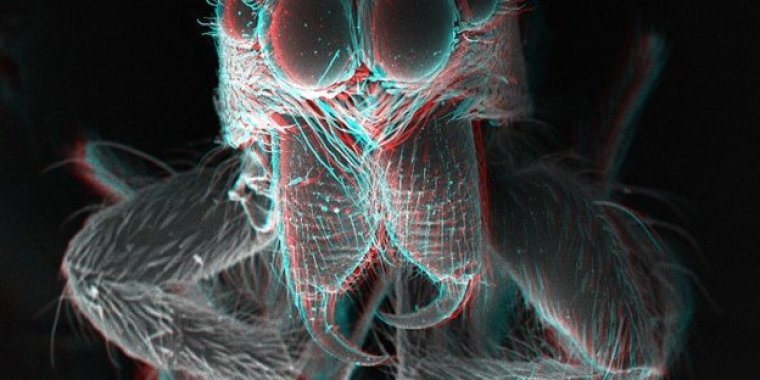| News / Science News |
Biomaterials give the fangs and mandibles of tiny invertebrates an outsized bite
Insects, arachnids and worms may have limited muscle power, but they can still pack a punch. These small animals use sharp structures like claws, fangs, stingers and mandibles to puncture the tough exteriors of larger and more powerful predators and prey.

A jumping spider’s fangs in 3D. ![]()
A study by University of Oregon scientists found metal-rich biomaterials that form the edges and tips of animals' sharp structures.
The added sharpness allows these animals to pierce and puncture objects that their size-restricted muscles would otherwise prohibit.
The research team looked at 10 different species from several phyla, studying the properties of tools these organisms use to cut and pierce. They identified zinc- and manganese-enriched biomaterials in these structures.
These biomaterials have more strength and durability than fingernails, mineralized tooth and bone, making them sharper and more resistant to fracture, damage and wear.
The metal-enriched materials also require less force to be effective, reducing the amount of energy an animal expends when hunting.
These findings help explain the widespread presence of biomineralized materials -- similar to the material found in exoskeletons -- in ants, spiders, worms, crustaceans and other small organisms.
Scientists and researchers will examine the feasibility of applying these findings for use in industrial design and the engineering of biomaterials. (National Science Foundation)
YOU MAY ALSO LIKE





